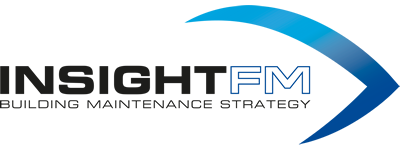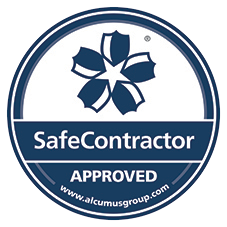At Insight FM, we frequently engage in “speculative” CAT A fit-outs across our portfolio of office buildings. This involves designing and implementing office spaces without a specific tenant in mind. Our comprehensive understanding of typical future fit-outs and their associated maintenance requirements shapes our approach to initial CAT A design and specification.
Key Considerations for Future CAT B Design Compatibility:
HEATING & COOLING
- System Flexibility: Whether connecting to a landlord central chiller system or via a dedicated refrigerant based system, avoiding large output fan coil units in favour of a greater number of lower output fan coil units will provide a greater level of flexibility for future fit-outs, since the greater number of fan coil units will make it easier to relocate units to serve partitioned offices and meeting rooms.
- Independent Controls: Ensure fan coil unit controls afford the greatest level of flexibility by avoiding “slaving” several fan coil units to a single “master”.
- Grille Placement: Carefully consider the use of linear grilles, as they will need adjustment or replacement when partitioning office spaces.
- Supplementary Cooling: Plan for tenant-installed supplementary cooling systems for areas like comms rooms. This requires space for external condenser units, refrigerant/control cabling within risers, and adequate electrical infrastructure.
WATER SERVICES
- Future Kitchenettes: Ensure that any capped-off water connections installed to future kitchenettes are valved-off immediately at the local (accessible) branch connection, to avoid creating a dead leg.
ELECTRICAL SERVICES
- Riser Access: Anticipate the need for additional lighting and power circuits, security and data systems cabling etc. and plan accordingly. Install (firestopped) penetrations and containment systems between risers and floor/ceiling voids to facilitate future installations. Be generous with space to accommodate extensive future fit-outs.
- Capacity Planning: Ensure distribution boards, lighting connection and control modules etc. have sufficient spare capacity for future needs.
- Lighting Controls: Choose a reputable supplier and avoid overly complex modular wiring systems that are difficult to adapt.
- Obsolescence: Confirm with suppliers/manufacturers that specified equipment (e.g., lighting connection and control systems) is not near end-of-life, to ensure future adaptability and maintainability.
- Lighting Validation: If adopting CAT A lighting and emergency lighting installations, validate their design for minimum lux levels and uniformity.
- Fire & Security Systems: Coordinate with the landlord’s maintenance contractors to understand the limitations and possibilities within existing systems.
GENERAL MAINTENANCE CONSIDERATIONS
- Accessibility: Ensure all installed services can be easily accessed for maintenance. This includes fixed power supplies, fan coil unit filters, and condensate pumps. Avoid using heavy lift-off access panels, which are difficult to handle and prone to damage. Understand and plan for ceiling and floor finishes, avoiding inaccessible plasterboard areas.
- Risers: Plan for adequate access to risers, considering the need for maintenance of both tenant and landlord services.
- Distribution Boards: Locate tenant distribution boards within the office area, not in landlord spaces, to facilitate easy and cost-effective installation of new circuits.
By adhering to these principles and incorporating accessibility considerations into our design approach, we optimise the maintenance process and minimise disruptions, ensuring that speculative CAT A fit-outs remain conducive to the evolving needs of tenants during CAT B fit-outs and beyond.


